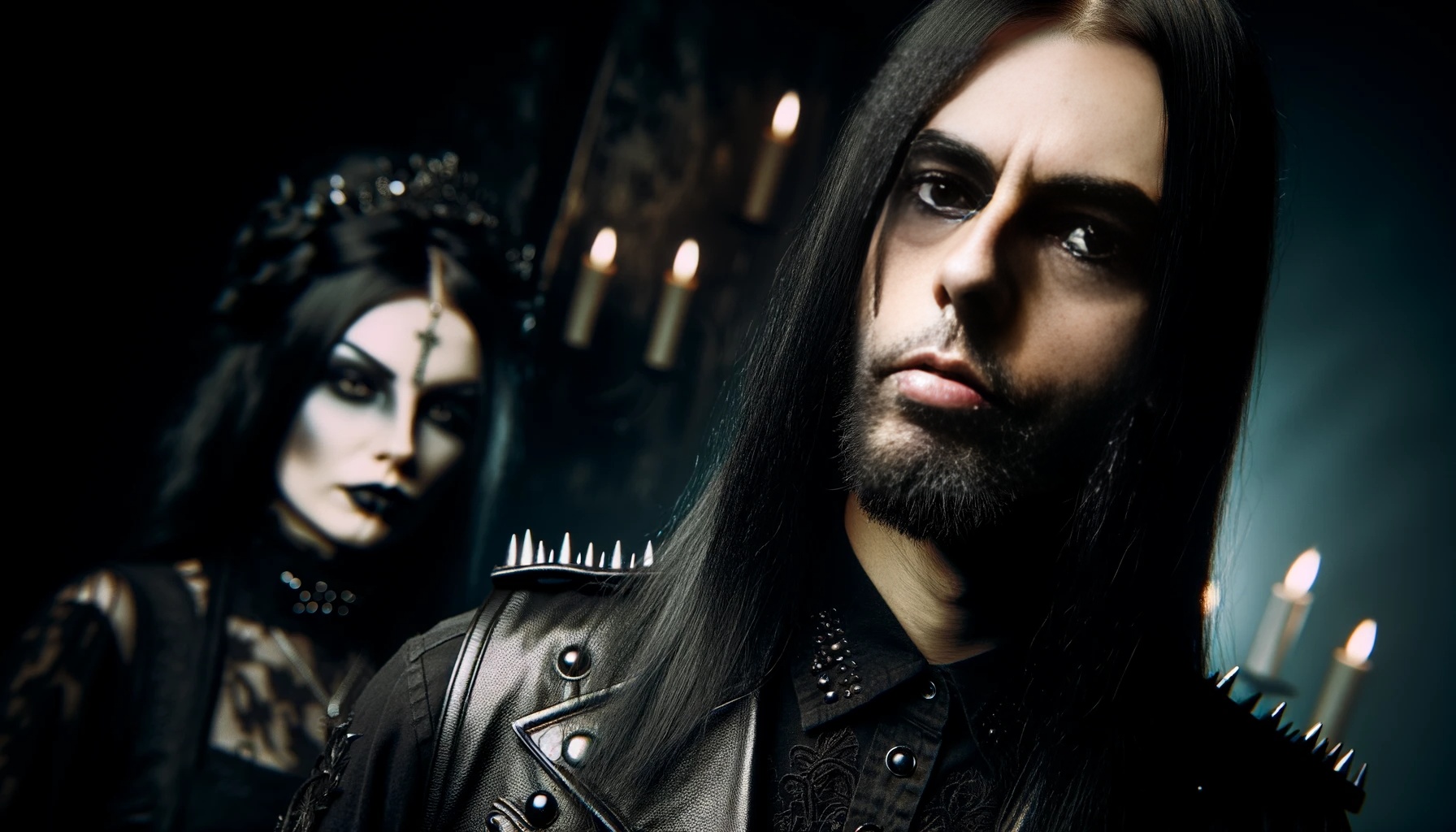Metal. The very word conjures up images of thundering guitars, pounding drums, and yes, intense vocal deliveries that many dismiss as mere screaming. But to reduce metal to just “screaming and noise” is to miss the essence of the genre entirely. Metal is a rich, multifaceted musical form that incorporates a diverse range of vocal techniques and musical complexities. This is a genre that demands respect and appreciation for its artistry and the skill it requires.

The Diverse Vocal Techniques of Metal
One of the biggest misconceptions about metal is that it’s all just about screaming. While harsh vocals are indeed a prominent feature in many subgenres, they are far from the only vocal style in metal. From growls and screams to clean singing and operatic vocals, metal boasts a wide array of vocal techniques that showcase the versatility and talent of its vocalists.
Growls and Screams
Let’s start with the most misunderstood aspect: growls and screams. These techniques are not random shouting but rather highly controlled vocal expressions. They require significant skill and training to execute properly without damaging the vocal cords. Death metal growls, for instance, create a guttural, powerful sound that conveys a sense of raw energy and aggression. Screams, often found in genres like black metal and metalcore, can vary from high-pitched shrieks to lower, more demonic tones. Each style serves a purpose in the musical landscape, adding intensity and emotional depth.
Clean Singing
Contrary to popular belief, clean singing is very much alive in metal. Bands like Iron Maiden, Nightwish, and Kamelot incorporate soaring, melodic vocals that rival those of any mainstream rock or pop artist. Bruce Dickinson of Iron Maiden, for example, is known for his operatic vocal style and impressive range. His ability to seamlessly transition from powerful belts to softer, more melodic lines showcases the dynamic nature of metal vocals.
Operatic and Symphonic Elements
Symphonic metal takes vocal complexity to another level by blending classical music elements with metal. Vocalists in this subgenre often have formal training in opera and classical singing. Take Tarja Turunen, former lead vocalist of Nightwish, whose operatic voice adds a majestic and ethereal quality to the band’s sound. This fusion of genres highlights the intricate and sophisticated nature of metal music, far beyond mere “screaming.”

The Musical Complexity of Metal
To fully appreciate metal, one must also consider its musical complexity. Metal is a genre that thrives on intricate compositions, technical prowess, and innovative songwriting. Dismissing it as simple noise ignores the sophisticated structures and techniques that define it.
Guitar Mastery
Guitar work in metal is nothing short of extraordinary. From the blistering solos of Eddie Van Halen to the intricate riffs of Metallica’s Kirk Hammett, metal guitarists push the boundaries of what is possible on the instrument. Techniques such as sweep picking, tapping, and palm muting are staples in the metal guitarist’s arsenal. These techniques require years of practice to master and contribute to the genre’s distinctive sound.
Rhythm and Drumming
The rhythm section in metal is equally complex. Drummers like Mike Portnoy (Dream Theater) and Gene Hoglan (Strapping Young Lad, Testament) are renowned for their technical skill and precision. Metal drumming often involves rapid double-bass pedal work, complex time signatures, and intricate fills. This level of musicianship demands not only physical endurance but also a deep understanding of rhythm and timing.
Bass Lines
While often overlooked, the bass guitar in metal plays a crucial role in creating the genre’s heavy, driving sound. Bassists like Steve Harris of Iron Maiden and Cliff Burton of Metallica have demonstrated the instrument’s potential for both melodic and rhythmic contributions. Harris’s galloping bass lines and Burton’s innovative use of effects pedals highlight the instrument’s versatility within metal.
Songwriting and Composition
Metal is a genre that embraces long-form composition and thematic storytelling. Progressive metal bands like Tool and Dream Theater are known for their complex song structures, often incorporating multiple movements and time changes within a single track. These compositions draw inspiration from classical music and jazz, blending them with the raw power of metal to create something uniquely powerful and emotionally resonant.

The Emotional and Thematic Depth of Metal
Beyond its technical aspects, metal is also rich in emotional and thematic content. Metal lyrics often explore profound and complex themes such as existentialism, mythology, and social issues. This thematic depth adds another layer to the genre’s appeal, inviting listeners to engage with the music on a deeper level.
Existential and Philosophical Themes
Many metal bands delve into existential and philosophical themes, questioning the nature of existence, the human condition, and the universe. Bands like Opeth and Gojira explore these themes with poetic lyrics and atmospheric music, creating a contemplative and immersive experience for listeners.
Mythology and Fantasy
Metal has a long-standing tradition of drawing inspiration from mythology and fantasy. Bands like Amon Amarth, inspired by Norse mythology, and Blind Guardian, known for their fantasy-themed lyrics, transport listeners to otherworldly realms. These themes provide a rich tapestry of storytelling that complements the epic nature of metal music.
Social and Political Commentary
Metal is also a powerful vehicle for social and political commentary. Bands like Rage Against the Machine and System of a Down use their music to address issues such as corruption, inequality, and war. The aggressive sound of metal amplifies these messages, providing a voice for those who feel marginalized or oppressed.

The Community and Culture of Metal
Metal is more than just a genre of music; it is a community and a culture. The metal community is known for its inclusivity and camaraderie, united by a shared love of the music and its ethos. Metal festivals like Wacken Open Air and Download Festival attract fans from all over the world, creating a sense of belonging and solidarity.
Inclusivity and Diversity
Despite its aggressive sound, the metal community is remarkably inclusive and diverse. Metal fans come from all walks of life, and the genre’s global appeal transcends cultural and geographical boundaries. This inclusivity fosters a sense of unity and acceptance within the metal community.
DIY Ethic and Underground Scene
Metal has a strong DIY ethic, with many bands starting out in the underground scene, self-producing their music, and organizing their own tours. This grassroots approach is a testament to the passion and dedication of metal musicians and fans alike. The underground scene continues to thrive, providing a platform for emerging artists to showcase their talent.

Conclusion
To dismiss metal as merely “screaming and noise” is to overlook the incredible skill, complexity, and artistry that define the genre. From diverse vocal techniques and intricate musical compositions to profound thematic content and a vibrant community, metal is a multifaceted art form that demands respect and appreciation. So next time someone tells you that metal is just screaming, invite them to explore its depths and discover the true power and beauty of this extraordinary genre.
For more insights and to explore the world of metal, visit the homepage. Stay connected and follow all my updates on social media through this link.
Keep it heavy, keep it loud, and remember: metal is more than just screaming. It’s a way of life.




